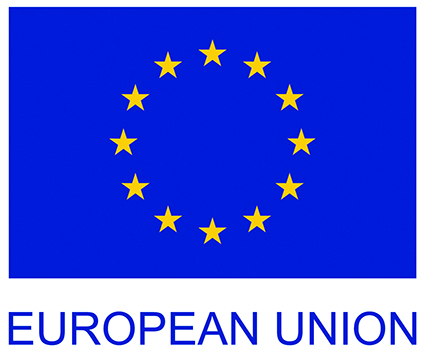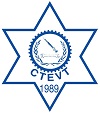A Much Needed TVET Campaign
Learning shared by Mr. Anil Bajracharya, Deputy-Director/Sr. Information Official, Research and Information Division, CTEVT on A Much Needed TVET Public Information Campaign
1. These types of campaigns are relatively new and untried in Nepal? What is the rationale behind the TVET Public Information Campaign, and that makes it different from what has been tried before?
Response: Previously, CTEVT resorted to doing individual activities such as providing ads in newspapers, creating jingles, among others. It was more of one-way communication from us to the target groups. However, the uniqueness of current campaign is that it’s a two-way communication, that is, stakeholders themselves have participated to design and deliver their information needs. Our target groups are young people, employers and community members – parents, teachers. Previously, even if we prepared an information brochure, it may not have captured their information needs as adequately. The integrated campaign, from planning to implementation, utilised participatory approach whereby stakeholders have stated their requirement, and through physical events created platforms for interactions and sharing each other’s information needs. Students interacted with employers directly and that also created an environment for one-to-one counselling; the impact was immediately seen on the faces of information seekers, that is young people. This is different from our previous attempts. The campaign provides a common platform whereby students were able to ask questions about TVET and its benefits, the career pathways, and the on the other hand, employers were able to state human resources need in their sector. This allowed stakeholders to understand the value of TVET and motivated youths to learn and seek more information on TVET opportunities. These things made this campaign very different and dynamic.
2. What are/have been the principal benefits of the Public Information Campaign, from the perspective of CTEVT? What does it offer young people and employers?
Response: For CTEVT, this is a very timely and needed activity. CTEVT has massively expanded its schools all over Nepal. That is also the national vision – TVET in all corners of the country, in all 753 palikas. Expansion also means more requirement for students to uptake TVET. With devolution, TVET is also being driven locally. For this campaign, all the activities have been piloted locally before launch. For example, a trainee welder who joins a training programme should have all the pre-information about the skills required and as well as earning opportunities available post training. As a TVET provider, we should be able to give this information to a trainee before enrolling in training. The campaign tries to address this information need, mainly in the three economic sectors: construction, tourism and agriculture, to young people. The campaign through its initial events demonstrated different types of skills in these three sectors by demonstrating various skills, providing information and linking with employers. The skills demonstrations and exhibitions were particularly useful in spiking young people’s interest and hopefully, it will gradually lead to uptake in TVET courses. CTEVT also acknowledges that the campaign has a very participatory approach, which served as an example and therefore was effective, even with few events. Therefore, the campaign from its planning to execution has involved and addressed the needs of stakeholders. It offers young people the right information about TVET and about employment opportunities.
One of the reasons for large dropouts from TVET education is due to limited information about the actual picture of TVET education. However, with the campaign we aim to provide clear information on TVET pathways and employment opportunities. Events provided visual representation of employment opportunities within each sector. Previously, the information was mostly paper based with few mass media activities, but the campaign provides visual representation of what TVET skills are. This is far more effective.
3. To what extent has the Public Information Campaign been effective in regional and employment sector targeting – and why has this been useful?
Response: The new constitution and devolution decentralises power and authority to province and local level. It is about local authorities taking ownership. With the campaign, the approach of Dakchyata and CTEVT was to allow CTEVT Schools at the local level to take ownership in planning and implementing the campaign including engagement with employers. Centrally, CTEVT only facilitated and provided technical backstopping. Employers at the local level were very appreciative of their engagement in the campaign and stated that it increased their information on types of technical schools within their communities. A lot of employers were not aware of students/graduates coming out of these local TVET institutes, whether public or private. At least, the events created a platform whereby employers are now more informed about TVET students within their own communities and how they can meet the local employment demands. On the other hand, young people became aware of the types of industries in their local communities which is how the campaign created a bridge between job seekers and end- users.
4. The Public Information Campaign deliberately had a lengthy planning process. What have you and other colleagues learned from the way in which the Public Information Campaign has been developed and designed?
Response: Instead of calling it lengthy, let’s say it was an effective planning process. If planning goes well, 80% of the work is achieved, and hence, less issues crop up in implementation. Which is why all events were very successful and received accolades from all stakeholders. Various officials at different levels were closely involved during the planning process which has capacitated us. TVET is very contextual. Planning centrally and executing locally without consultation does not yield the desired results. Therefore, we went to local level and involved local authorities to hold discussion with employers and plan events that would be effective to address the needs of the schools locally. And, the result is clear: we used sub campaigns to target each of the target groups. This also helped built officials’ knowledge on how one activity can’t fit all – that there can be several small activities encompassing a bigger campaign to target each stakeholder. So good planning really paid off.
5. How has the planning process for the Public Information Campaign engaged key figures and built ownership?
Response: For the campaign, not just CTEVT officials at the central level but all local schools were involved in identifying sector needs within their local communities. This built their capacity alongside additional support from CTEVT central level and Dakchyata to helm the campaign locally and effectively engage the private sector. CTEVT officials from Dakchyata supported schools were engaged in identifying issues that supported in the campaign needs assessment to identify those types of activities that would be useful to create information and awareness on TVET among students. At the national level, there were extensive discussions held early on with different tiers in building ownership regarding the usefulness of the campaign and how it is timely and much needed. Eventually, getting the Member Secretary on board and the CTEVT taking full ownership of the campaign should also be mentioned. So much so that CTEVT now has proposed a budget for similar campaign activities to be undertaken by schools at the local level.
6. Could CTEVT schools – in future PIC – play a more proactive role, both in planning and execution?
Response: As I mentioned, CTEVT is currently proposing and planning a set of activities and budget for the upcoming fiscal year. From the Research and Information Division, I have proposed similar activities of the campaign to be executed by schools. The plan is yet to be finalised. Owing to COVID-19, there has been lot of budget cuts. Therefore, it is not confirmed yet how we will go about it. However, at least, if three of schools can do this sort of activities this year, it will give encouragement for other five schools in the following year. Hopefully, with learning from the current campaign, all 59 schools – even if they can’t do all integrated activities, can at least carry out some smaller school campaign activities. It can be done in the most cost-effective way to target students which can be helpful to increase uptake of TVET students. Therefore, in this fiscal year, I have proposed replication of similar PIC activities in at least 5 CTEVT schools. I am quite optimistic that this will materialise. I have proposed NPR 10 lakhs for each school to do school campaign activities in three community schools and NPR 1 lakh each to 59 Schools to conduct community campaign.
7. What, in your view, have been some of the key factors for the success of the Public Information Campaign so far?
Response: From the 4 events that were conducted, the level of participations was huge, almost 4000+. To gather attention of this mass and to be able to create a common platform for employers and students was the key successful factor. The most important aspect is that all these stakeholders were keen to participate and took complete ownership in executing all events; from CTEVT in taking ownership of the campaign to employers demonstrating and realising their value in TVET. In addition, there were opportunities for one-to-one counselling, whereby employers addressed students’ queries. Secondly, it has always been said that TVET should be employer and demand driven. Through the campaign, we were able to bring forward employers as the key stakeholders of the campaign. Employers exhibited the job opportunities and demand of the sector while students were able to see various types of industries, and the types of employment available. The campaign therefore successfully was able to bridge the gap between employers and young people. I believe this is the most successful factor of the campaign. The actual effort of the campaign and the real impact will be seen in few years.
8. Are there elements you think we can improve on in future?
Response: One of the lessons learnt is to select appropriate timing of the campaign, depending on the target group. For example, in our current campaign, our primary target group are students from 8-10 standard. However, during March/April is exactly when students, especially from 10 standard are busy preparing for their board exams. That’s why there were some difficulties in getting these students involved in huge numbers. The other one from a CTEVT perspective is the selection of schools. For example, the B.P. Memorial School in Janakpur is very far from the main town and therefore it was a challenge to get students and visitors to attend events at such a faraway place. This also posed logistics and financial challenges in bringing visitors to the event. Moving forward, it is important to think of common footfall areas which is easily accessible by all stakeholders but holding these events in such roomy places also poses risks of not showing what a TVET school looks like and what are the premises and facilities at the school. Similar was the situation in Tikapur school. Instead of focussing only on CTEVT schools, spreading it out to mass footfall areas is important which is why community campaigns are one the major sub campaigns to address this. Although most of CTEVT schools are away from the main town centres. Nevertheless, this is something that should be taken into consideration while planning in the future.
9. Are there specific tactics, tools and approaches that, in your view, have been useful and are worth continuing?
Response: Demonstration of Skills by TVET students and Skills competition is one of the most effective approaches that needs to be carried on. As I mentioned, this was well praised by all stakeholders and the highest level of CTEVT authority decided to continue such skills demonstrations on CTEVT public events, such as the annual CTEVT day. Likewise, getting employers to set up booths and exhibit information and products from relevant sectors was also a useful tactic. It gave a visual representation to young people and to general visitors on different types of employments. Likewise, products demonstration by TVET students and graduates such as the wheelchairs produced by TVET graduate and competition was a huge success that not only promoted these graduates work but also allowed an engaging way of informing students about employment opportunities.
The campaign also has the ‘change makers’ component which proved to be highly successful. A lot of these change makers/successful TVET graduates were invited to our event as speakers to motivate and encourage students on seeking further information on TVET. This is a strand that runs parallel throughout the campaign through highlighting their stories via media or providing them platforms to speak or bringing them to schools to provide counselling to students. This has been an effective approach thus far.
The campaign documentary film was also an important engaging promotional tool that captured private sector voices. Employers’ representatives spoke of their sector demand and current human resources needs.
Likewise, heavy engagement and complete ownership of the campaign by CTEVT was the most effective approach. So much so that the upcoming PIC 2 to be led by EU funded Sakchyamta project is now proposed to be led by the Research and Information Division of CTEVT.
Branding and the campaign slogan ‘With skills in hands employability is a chance’ and visual representation of the event and the whole campaign was another successful tactic. Using selfie booths for students and visitors to take pictures and post on Facebook under hashtag #skillsforemployability was a useful social media strategy.
10. CTEVT and its TVET partners are planning to continue the PIC approach in future years – what do you think would be required to make this a success?
Response: The second phase of the campaign will be implemented and lead by 3-4 new CTEVT schools under PIC 2. It is obvious that we will need to orient and transfer the learning and knowledge from PIC 1 to these schools. Just giving them a budget would not be enough. We will need to train them on planning and implementing a campaign through workshops as necessary. Dakchyata and CTEVT jointly can lead on giving such trainings and orientation.
Additionally, the brand created by the current campaign needs to be continued as a common umbrella to see long term effects of the campaign. It will be a mess if every school starts creating its own branding and slogan. For the consistency and sustainability of the campaign, the branding and slogan needs to continue and run through every phase of the campaign.
11. We saw a link-up with the Dakchyata supported schools in PIC I – can that link be strengthened in PIC II? What are the lessons learned from PIC I that you feel should be taken over? And are there areas that call for modification or change, when CTEVT will work with Sakchyamta in PIC II?
Response: Despite a good response to the campaign launch events, unfortunately we had to put all campaign activities abruptly on hold, owing to Government directive related to Covid-19. So, this question may be too early to answer. It would have been easier to answer if we had seen further evidence of the campaign effectiveness. Nevertheless, all the tactics and approaches mentioned above to reach out to young people while ensuring that employers are the key stakeholder needs to be continued and taken over hereon. Campaign activities needs to be focussed locally like it has been done in PIC 1 including having clear target groups, such as young people and disadvantaged groups. For the sustainability and overall impact, messaging needs to be consistent including branding for several years.
Job Fairs is one of the major activities which still needs to be done. It is the only mechanism that can encourage private sector participation, demonstrating value of TVET skills and linkages to employment. This is one activity that needs to be continued in all phases of PIC.
As for modification, owing to the Covid -19 situation, Nepal is currently seeing returnees’ - migrant workers in flocks and this will continue several months down the line. This is what TVET really needs to focus now – getting information needs of these groups and providing them information on employment opportunities. A lot of these returnees can be effectively mobilised within the agriculture sector. Therefore, the target group of the next phases of PIC could be more on the returnees or could in fact even become the current campaign target group. Therefore, I believe that the current threat can be converted into an opportunity.
12. Looking ahead, what has the Public Information Campaign demonstrated in terms of the outreach and engagement that is both desirable and necessary?
Response: Engagement with employers linking to employment is the most desired component of TVET activities which the campaign has been able to tap into. For any TVET graduate, their only interest is employment. So, to bring these interested groups and job providers onto the same platform to improve outreach has been the most effective outcome of PIC.






